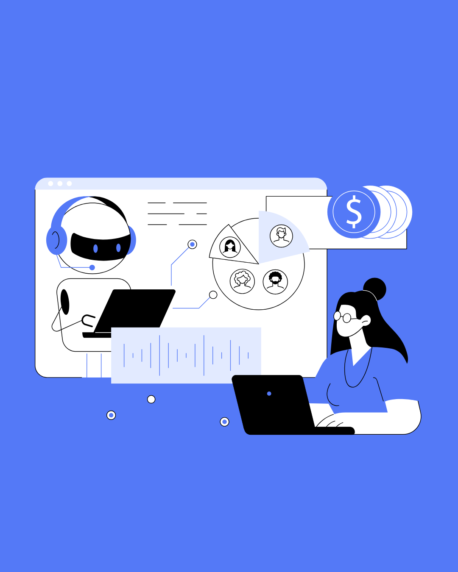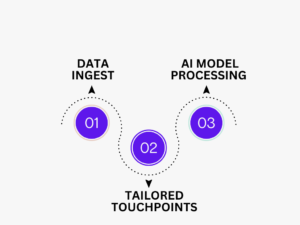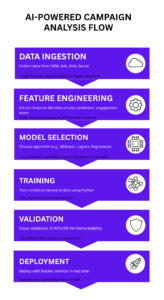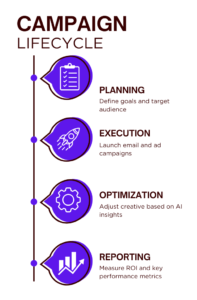AI-Powered Campaign Analysis: The Complete Guide to Transforming Your Marketing ROI in 2025


In today’s digital landscape, marketers are drowning in data but starving for insights. Traditional analytics platforms can tell you what happened, but they often struggle to predict what will happen next or recommend the optimal next steps. Enter ai-powered campaign analysis: a revolutionary approach that leverages machine learning, natural language processing, and predictive modeling to turn raw campaign data into strategic, actionable insights. In this guide, you’ll learn how AI is reshaping campaign analysis, discover step-by-step implementation tips, explore real-world examples, and see how to measure ROI like a pro in 2025.
AI algorithms can process millions of customer touchpoints—emails opened, links clicked, pages visited—and identify patterns that human analysts would miss. By predicting individual preferences and behaviors, you can deliver the right content to the right person at the right time:
Dynamic Content Optimization: Automatically tailor email subject lines, landing page headlines, and social media creatives based on user segments.
Predictive Segmentation: Use clustering algorithms to discover high-value micro-segments and prioritize outreach.

Manual data wrangling and spreadsheet-based analysis can take days or weeks. AI platforms streamline the process:
Automated Data Integration: Connect with CRM, ad platforms, and web analytics tools to unify data in real time.
Real-Time Alerts and Insights: Get instant notifications when performance deviates from benchmarks or when new opportunities arise.
Predictive models powered by machine learning can forecast campaign performance, like click-through rates (CTR), conversion rates, and revenue, more accurately than spreadsheet-based trend lines.
Scenario Planning: Test “what-if” scenarios (e.g., 10% budget reallocation to social vs. search) to forecast ROI under different conditions.
Seasonality and Trend Detection: Automatically adjust for holidays, product launches, and external events that impact performance.
By understanding which channels, creatives, or audiences drive the highest ROI, marketers can allocate budget with surgical precision.
ROI-Driven Budget Allocation: AI recommends budget shifts toward high-performing segments in real time.
Creative Performance Scoring: Identify which ad copy, images, or videos yield the best results, and replicate success.

Transitioning to an AI-driven analysis framework may seem daunting. Here’s a practical roadmap to get started:
Align with Business Goals: Are you focused on lead generation, revenue growth, customer retention, or all of the above?
Select Actionable KPIs: Choose metrics that tie directly to revenue outcomes, such as cost per acquisition (CPA), lifetime value (LTV), and marketing-influenced revenue.
Data Sources: List all data inputs—CRM, email platform, ad networks, social analytics, web analytics.
Data Quality: Validate that data is clean, standardized, and free of duplicates. Poor data quality will poison your AI models.
Integration Layer: Use APIs or ETL tools to centralize data into a data warehouse or customer data platform (CDP).
Evaluate vendors based on:
Native Integrations: Look for pre-built connectors to your key channels (Google Ads, Facebook Ads, HubSpot, Salesforce).
User-Friendly Interface: Ensure your team can build and interpret models without needing a PhD in data science.
Customization and Transparency: Opt for platforms that explain model decisions (also known as explainable AI).
Example: Company X consolidated its ad data and implemented an AI marketing suite in under four weeks, resulting in a 20% lift in conversion rate within the first quarter.
Feature Engineering: Identify which data points (features) are most predictive—e.g., time on site, email engagement score, social sentiment.
Model Selection: Start with pre-trained models or AutoML tools to accelerate time to insights.
Validation: Use holdout sets to test model accuracy and avoid overfitting.
Dashboards and Reports: Embed AI-driven recommendations directly into your marketing dashboards.
Automated Workflows: Set up triggers to adjust bids, pause underperforming ads, or send personalized follow-up emails based on AI signals.

| Metric | Description | Importance |
| Incremental ROI | (Revenue – Cost) / Cost, incremental lift from AI | Measures direct AI impact on profitability |
| Customer Acquisition Cost | Total spend / Number of new customers | Tracks acquisition efficiency |
| Marketing-Influenced Revenue | Revenue generated from users exposed to your campaigns | Links marketing activities to top-line growth |
| Model Accuracy | Correct predictions vs. actual outcomes | Validates the trustworthiness of AI forecasts |
ROI Calculation Example: If you spend $10,000 on a campaign and AI-driven optimization yields $50,000 in additional revenue (beyond baseline), your incremental ROI is 400%:(50,000 – 10,000) / 10,000 = 4 X (400%)
Generative AI for Creative Assets: AI-generated copy, images, and videos will become mainstream for rapid campaign iterations.
Voice and Conversational Analytics: Expect deeper insights from voice assistants and chatbots as semantic understanding improves.
Cross-Channel Orchestration: AI will unify offline and online data—think in-store visits + digital engagements.
Privacy-First Analytics: With evolving regulations, AI tools will need to balance personalization with data privacy and consent.
Pro Tip: Pilot AI-driven analysis on a single channel, measure results, then scale out.
AI-powered campaign analysis is no longer a futuristic concept—it’s a must-have capability for marketers aiming to maximize ROI in 2025 and beyond. By harnessing machine learning for hyper-personalization, predictive insights, and real-time anomaly detection, you can stay steps ahead of competitors, optimize every marketing dollar, and deliver truly data-driven results. Follow the implementation roadmap outlined above, measure your success with clear metrics, and draw inspiration from proven case studies. Start small, learn quickly, and scale your AI-driven efforts to transform your campaigns into growth engines.